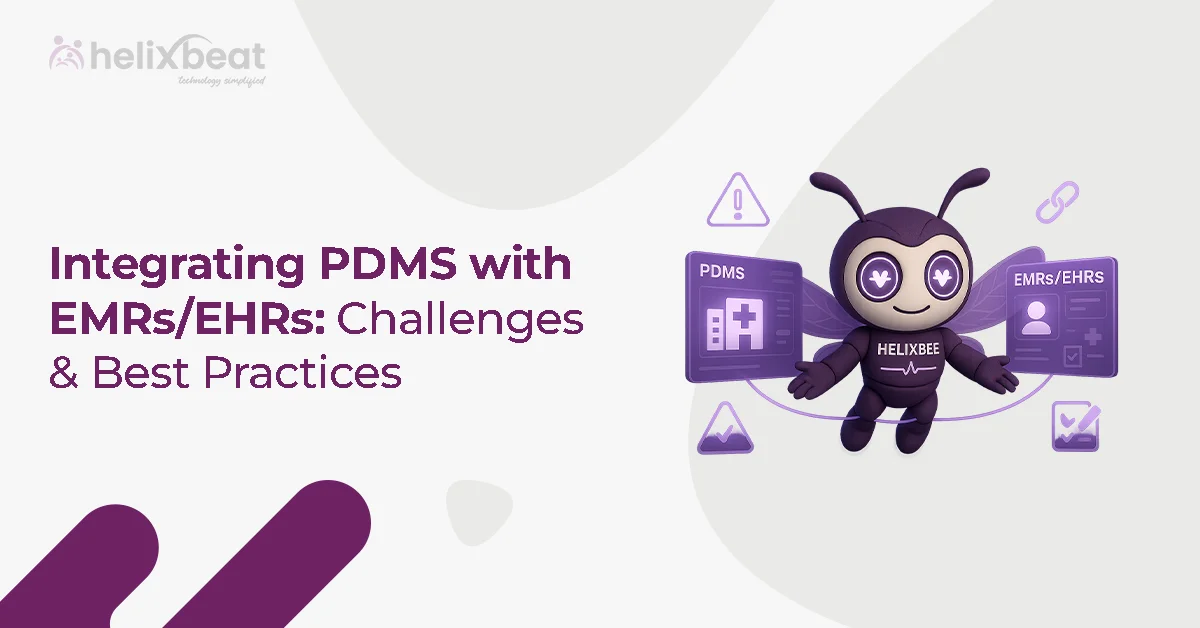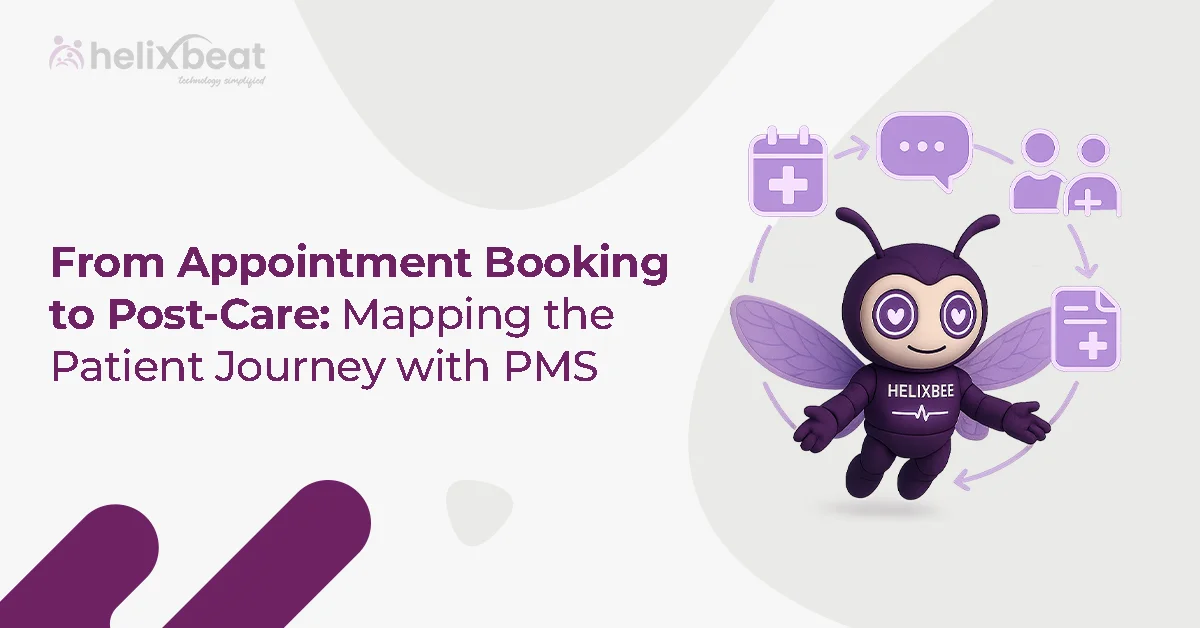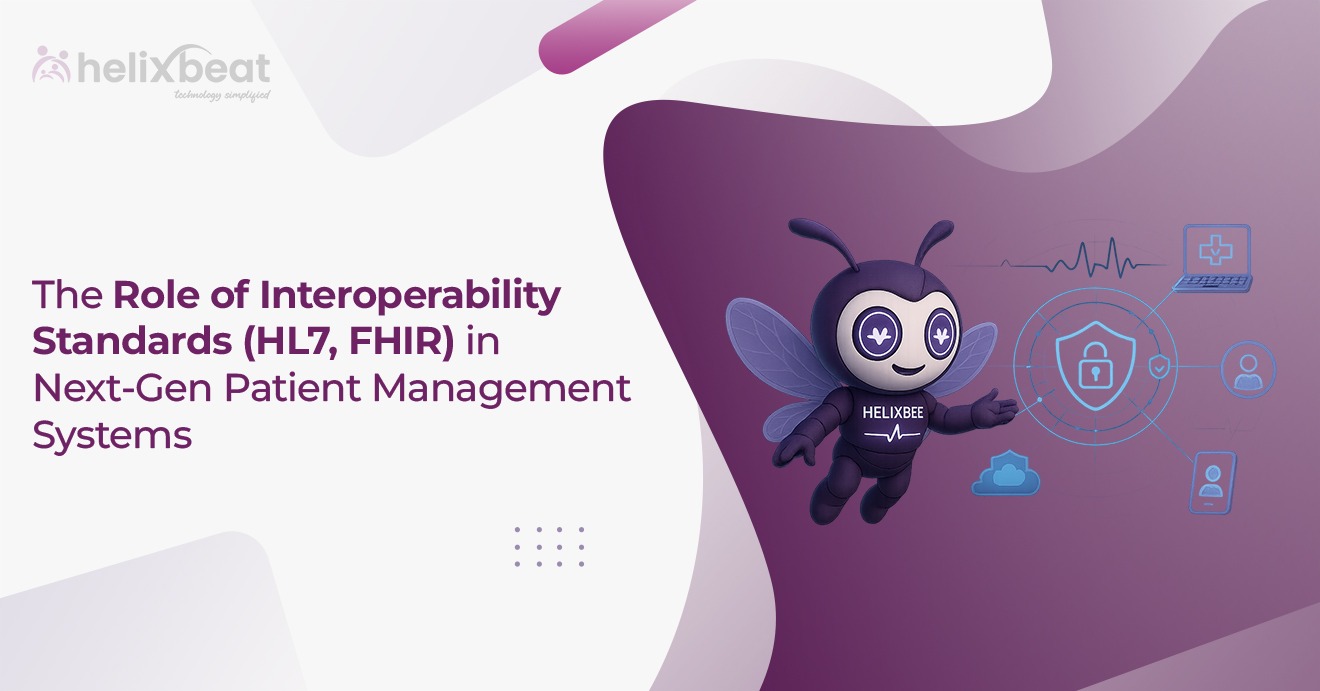Did you know that over 60% of patients are more likely to remain with healthcare providers that offer digital tools for communication and scheduling? In today’s world, where convenience and personalization are key, patient engagement has become an essential aspect of modern healthcare delivery.
Investing in digital patient engagement is now a strategic necessity, as it can reduce no-show rates and improve chronic disease management. In this blog, we will explore actionable strategies, share real-world examples, and demonstrate how PULSE by Helixbeat can help your practice strengthen patient relationships.

Table of Contents
What Is Patient Engagement?
Patient engagement is a collaborative effort between healthcare providers and patients that empowers individuals to actively participate in their health journey. It’s not just about reminding patients to take their medications or attend appointments; it’s about establishing a trusted partnership where patients are informed, involved, and motivated to make informed health-related decisions.
Authentic engagement involves understanding each patient’s unique needs, delivering clear and available health information, and making care more transparent and personalized. Whether it’s through mobile health apps, patient portals, or one-on-one coaching, the goal is to enhance outcomes, foster trust, and encourage long-term behavior change.
What is a patient engagement strategy?
It’s a carefully developed plan that encourages patients to take charge of their health through education, digital tools, and support from their healthcare providers.
What are the 4 Ps of patient-centered care?
Participation, personalization, predictability, and prevention; these principles guide meaningful engagement and better care experiences.
Why Healthcare Providers Must Prioritize Patient Engagement
Healthcare providers must prioritize patient engagement to deliver better care experiences and remain competitive in a tech-forward world. Here’s why:
- Boosts Operational Efficiency
- Engaged patients are more likely to react to reminders, attend scheduled appointments, and update their personal health information.
- This reduces administrative burden and leads to better resource utilization.
- Improves Clinical Outcomes
- Studies show that patients who actively engage in their care have better management of chronic diseases such as diabetes, asthma, and heart disease.
- Engagement facilitates earlier detection, enhances adherence to treatment plans, and leads to improved recovery rates.
- Fosters Patient Loyalty and Trust
- When patients feel seen, heard, and involved in their care decisions, they’re more likely to return to the same provider.
- This loyalty not only leads to repeat visits but also encourages word-of-mouth referrals.
- Drives Value-Based Care Rewards
- Many insurers and regulators incentivize practices that achieve high levels of patient engagement.
- These include improved HEDIS scores, patient activation metrics, and shared savings under value-based models.
Proven Patient Engagement Strategies That Work
1. Personalized Care Communication
- Tailored health messages via SMS/email
- Reminders for checkups, screenings, and medications
- Birthday wishes or milestone congratulations
CTA: Want to automate personalized messages? [Book a demo of PULSE]
2. Two-Way Digital Patient Portals
- Allow patients to view lab results, request refills, and chat with care teams
- Drives transparency and accountability
3. Mobile-First Patient Engagement Software
- Push notifications and mobile chat options
- Fast appointment scheduling
- Integrated virtual care features
4. Engaging Patients in Decision-Making
- Use shared decision-making tools during consultations
- Encourage questions and goal-setting
5. Multi-Lingual and Accessible Interfaces
- Digital tools must cater to regional languages and be visually accessible
- Consider literacy levels and cultural context
Technology-Powered Patient Engagement Solutions
Patient engagement solutions powered by technology go far beyond easy appointment reminders; they enable real-time, meaningful interactions that support clinical and administrative efficiency.
PULSE by Helixbeat is one such digital solution that empowers providers to take control of patient engagement. Here’s what technology-powered engagement looks like:
Automated Follow-Up Workflows
- From appointment reminders to post-visit feedback, automated workflows eliminate manual bottlenecks and keep patients on track.
Customizable Digital Care Plans
- Providers can send personalized care instructions, check-in forms, and self-care resources tailored to each patient’s diagnosis and behavior.
Secure Real-Time Communication
- With HIPAA-compliant messaging dashboards, care teams can have two-way conversations with patients via SMS or app notifications.
Behavioral Nudges and Notifications
- Intelligent prompts based on past interactions or missed actions gently guide patients toward healthier habits.
Addressing Common Operational Problems in Engaging Patients
Despite the growing adoption of digital healthcare tools, many providers continue to face operational roadblocks that hinder patient engagement. Identifying and addressing these pain points is essential to building a more connected care environment.
Low Digital Literacy
- Many patients, especially older adults, may struggle to use patient portals or mobile apps.
- Without proper guidance, they may disengage entirely.
- Offering in-app tutorials, video walkthroughs, and live assistance can significantly improve comfort levels and adoption rates.
Language and Cultural Barriers
- A significant portion of the patient population may not be fluent in English or may have cultural preferences that influence their interaction with healthcare systems.
- PULSE provides multilingual support and customizable interfaces that cater to diverse cultural contexts, enabling providers to reach underserved communities effectively.
Fragmented Communication Across Teams
- When patient data and communications are scattered across different systems (EHR, scheduling, billing), important information can be missed.
- Centralized dashboards, such as those in PULSE, consolidate conversations, documents, and care plans, resulting in fewer errors and a more streamlined experience.
Inconsistent Follow-Up
- Manual reminders or inconsistent outreach often led to missed appointments and poor adherence to care plans.
- Automated workflows through patient engagement software help maintain a steady communication rhythm, reduce drop-offs, and improve clinical outcomes.
Measuring Success: Key Metrics for Patient Engagement in Healthcare
Engaging patients to improve quality of care is not just a goal; it’s a measurable, achievable outcome with the right tools.
- Patient activation scores
- Repeat appointment rates
- Average response time to provider messages
- Engagement with educational content
Closing Thoughts
Healthcare isn’t just about treatment—it’s about relationships. Engaging your patients digitally, consistently, and meaningfully leads to improved outcomes and a stronger business.
According to recent scholarly articles on patient engagement, active involvement has been shown to reduce hospital readmissions and promote long-term wellness significantly.
CTA: Ready to Elevate Patient Relationships? [Explore how PULSE by Helixbeat can help!
FAQs
How do you encourage patient engagement?
Encouraging patient engagement involves clear communication, education, and support. Providers can:
- Use digital reminders and educational content.
- Personalize care plans and communications
- Encourage shared decision-making during appointments
- Offer user-friendly technology like patient portals and mobile apps
Which action best promotes patient engagement?
The most effective action involves patients in their own care decisions. When patients feel empowered and informed, they are more likely to participate actively in their care. Shared decision-making and personalized digital communication are especially impactful.
What is a patient engagement strategy?
A patient engagement strategy is a structured plan that healthcare providers use to motivate patients to take an active role in their health. It includes tools, workflows, education, and communication channels to promote consistent interaction and behavior change.
What are the 4 Ps of patient-centered care?
The 4 Ps stand for:
- Participation: Involving patients in care decisions
- Personalization: Tailoring care to individual needs
- Predictability: Providing clear, timely information
- Prevention: Focusing on proactive health management
What are the top patient engagement tools in healthcare?
Leading tools include:
- Patient portals
- Mobile health apps
- Automated messaging systems
- Telehealth platforms
- Engagement dashboards like PULSE by Helixbeat
What challenges do providers face in engaging patients?
- Low digital literacy among some patients
- Language and cultural barriers
- Fragmented communication systems
- Inconsistent or manual follow-up routines
How does software improve patient behavior change?
Software platforms like PULSE provide personalized prompts, track adherence, deliver educational content, and enable two-way communication. These features help reinforce healthy habits and support patients staying on track.
Are there proven statistics linking engagement to outcomes?
Yes. Studies show that engaged patients have:
- 30% higher satisfaction rates (NEJM Catalyst)
- 45% fewer missed appointments
- Better chronic disease management (Health Affairs)
Can patient portals drive better compliance?
Absolutely. Portals allow patients to:
- Access their health data
- Communicate with providers
- Manage appointments and medications
- Stay informed through educational resources
Where can I find scholarly articles on patient engagement?
Reliable sources include:
- JAMA Network
- NEJM Catalyst
- Health Affairs














